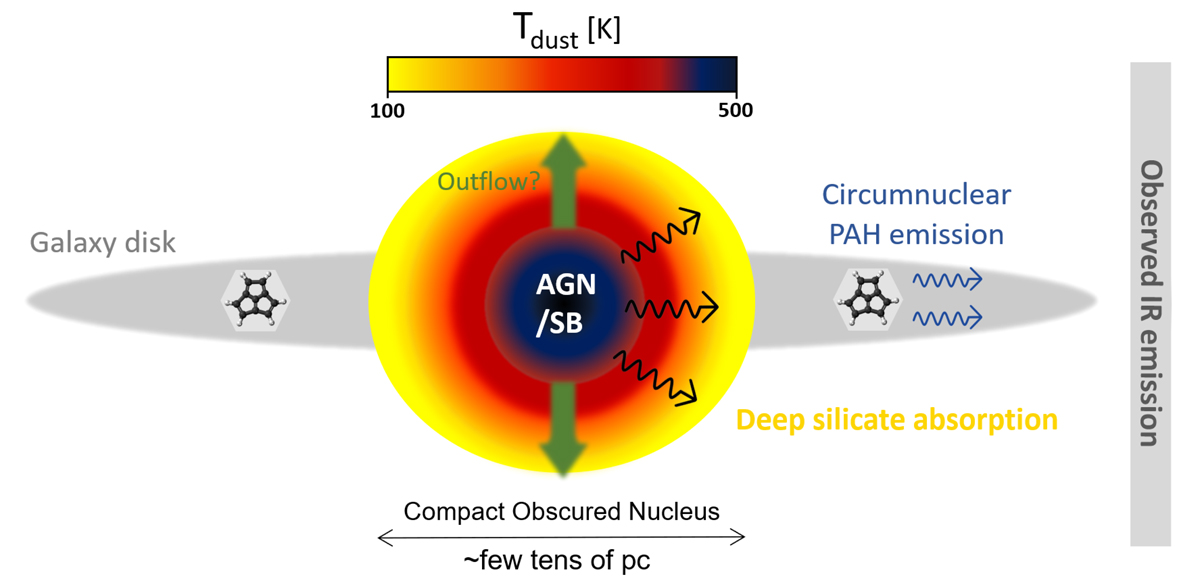Fig. 1.

Download original image
Schematic view of a galaxy containing a CON (not to scale). The cartoon depicts a compact obscured nucleus, with its submillimetre HCN–vib emission emerging from inside the inner few tens of parsecs (Aalto et al. 2015) surrounded by a star-formation galaxy disc where PAH molecules mainly reside. The total IR emission of a CON galaxy includes contributions from two distinct components: one coming from a heavily obscured nucleus (with a deep 9.7 μm silicate absorption) and the other from the host galaxy disc (circumnuclear PAH emission). The colour scheme used represents the dust temperature gradient of the CON ranging from black (high values) to yellow (lower values of the dust temperature). The green vertical arrows represent the existence of possible outflows whose presence has been confirmed in some CON sources (e.g., Falstad et al. 2019 and references therein) suggesting that the geometry of the compact obscured nucleus may not be perfectly spherically symmetric. The grey shaded rectangle on the right side of the plot (labelled ‘observed IR emission’) represents the large aperture of Spitzer/IRS which contains a significant part of the total IR flux of the galaxy. We note that the fraction of the galaxy included in the Spitzer/IRS aperture depends on the size of the slit with respect to the size of the galaxy and its distance (see Appendix A). See also Fig. 5 for further details on the total IR emission of galaxies containing CONs.
Current usage metrics show cumulative count of Article Views (full-text article views including HTML views, PDF and ePub downloads, according to the available data) and Abstracts Views on Vision4Press platform.
Data correspond to usage on the plateform after 2015. The current usage metrics is available 48-96 hours after online publication and is updated daily on week days.
Initial download of the metrics may take a while.


